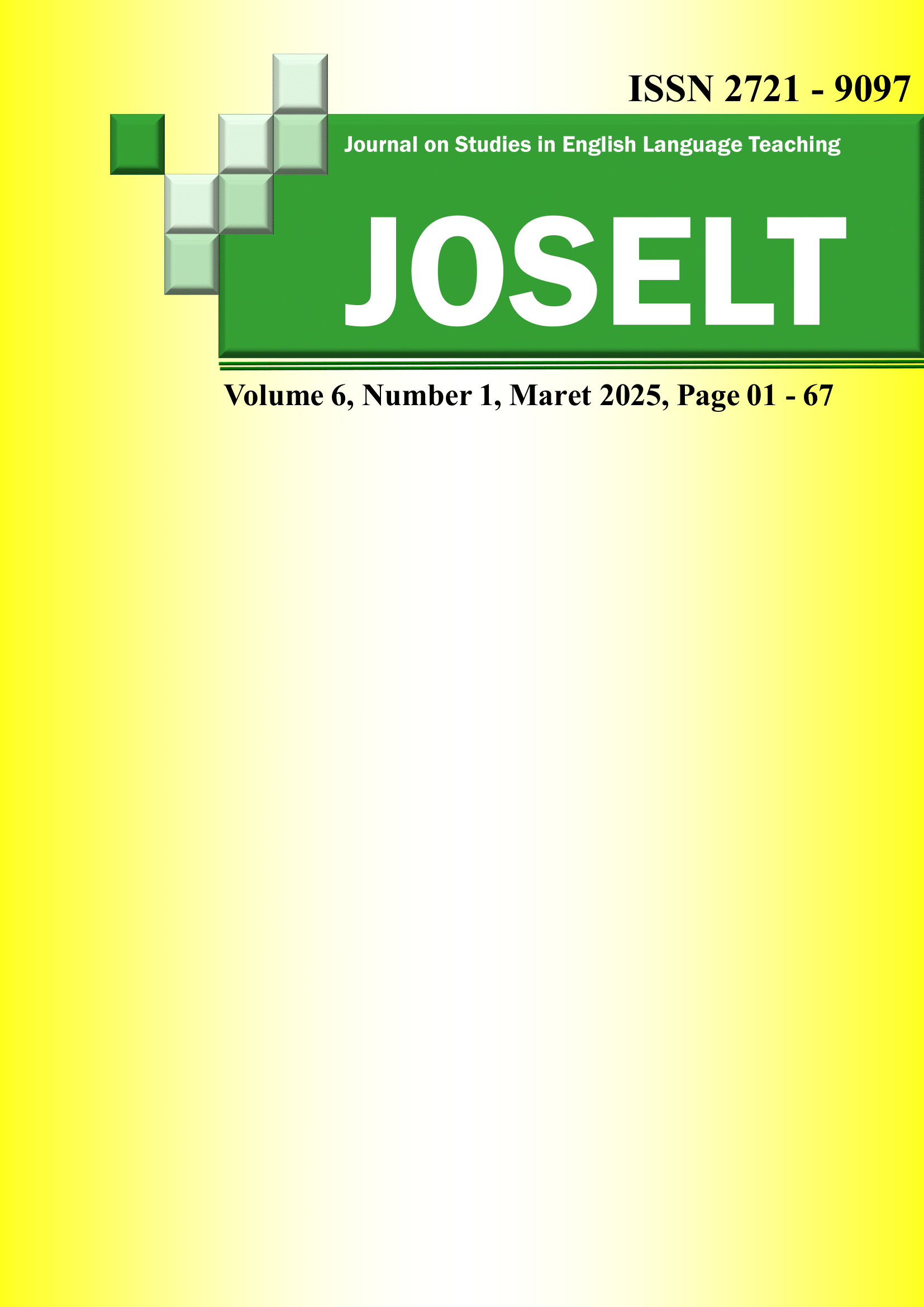Enhancing Students’ Narrative Writing Ability Using Picture-Cued Technique Combined with Story Mapping
Keywords:
writing skill, picture-cued technique, guided writing, classroom action researchAbstract
Writing skill is one of the four essential language skills that must be mastered by students. However, many students continue to struggle with writing. The objective of this classroom action research was to investigate whether the writing skill of the seventh-grade students of PoMe Educircle in the academic year 2024/2025 could be improved through the implementation of the Picture-Cued Technique combined with Guided Writing. To achieve this goal, the researcher conducted a pre-test, post-tests, and administered a questionnaire. The result of the pre-test showed that the students' initial writing ability was relatively low, with an average score of 55.62. After applying the combined technique, post-tests were administered at the end of each cycle, showing improvement to 61.47 in cycle I and 79.53 in cycle II. The significant improvement indicated that the technique was effective. Furthermore, a questionnaire was distributed at the end of cycle II to obtain additional supporting data. It revealed that students demonstrated increased motivation and a more positive attitude toward writing after the implementation. In conclusion, this study showed that the writing skill of the seventh-grade students of PoMe Educircle could be effectively improved through the Picture-Cued Technique combined with Guided Writing. The students also responded positively to the learning process.
References
Burns, A. (2010). Doing action research in English language teaching: A guide for practitioners. Routledge.
Dewi, P. A. M. S., & Krismayani, N. P. W. (2023). Enhancing students’ writing through visual-based learning. Journal of Language Education Studies, 5(1), 45–53.
Harmer, J. (2007). The practice of English language teaching (4th ed.). Longman.
Faisal, F., & Suwandita, K. (2013). The effectiveness of fresh technique to teach descriptive paragraph. Journal of Education and Learning (EduLearn), 7(4), 239- 248.https://doi.org /10.11591/edulearn.v7i4.199
Harmer, J. (2007). The practice of English language teaching. Pearson Longman.
Kagan, S., & Kagan, M. (2009). Kagan Cooperative Learning. Kagan Publishing.
Maftoon, P., & Sarem, S. N. (2015). A Critical Look at the Presentation, Practice, Production, (PPP) Approach: Challenges and Promises for ELT. BRAIN. Broad Research in Artificial Intelligence and Neuroscienc e, 3(4), 31- 36. https://www.edusof t.ro/brain/index.php/brain/article/vi ew/442
McTaggart, R. (1982). Action research planner. Deakin University Press.
Mettetal, G. (2001). The what, why, and how of classroom action research. Journal of Scholarship of Teaching and Learning, 2(1), 6–13.
Oshima, A., & Hogue, A. (2007). Introduction to academic writing (3rd ed.). Pearson Longman.
Oshima, A., & Hogue, A. (2007). Introduction to Academic Writing : Answer Key. In Pearson Education Limited. https://edisclipnes.usp.br/ plueginefile.php/3928474/mod_res ource/content/1/IntroductiontoAcad emicWriting.pdf
Pachri Khusaini. (2021). The Students Ability in Writing Descriptive Pa ragraph at Fourth Semester English Department of Stkip Ypm Bangkok Academic Year 2019/2020,(2657 –0246).

